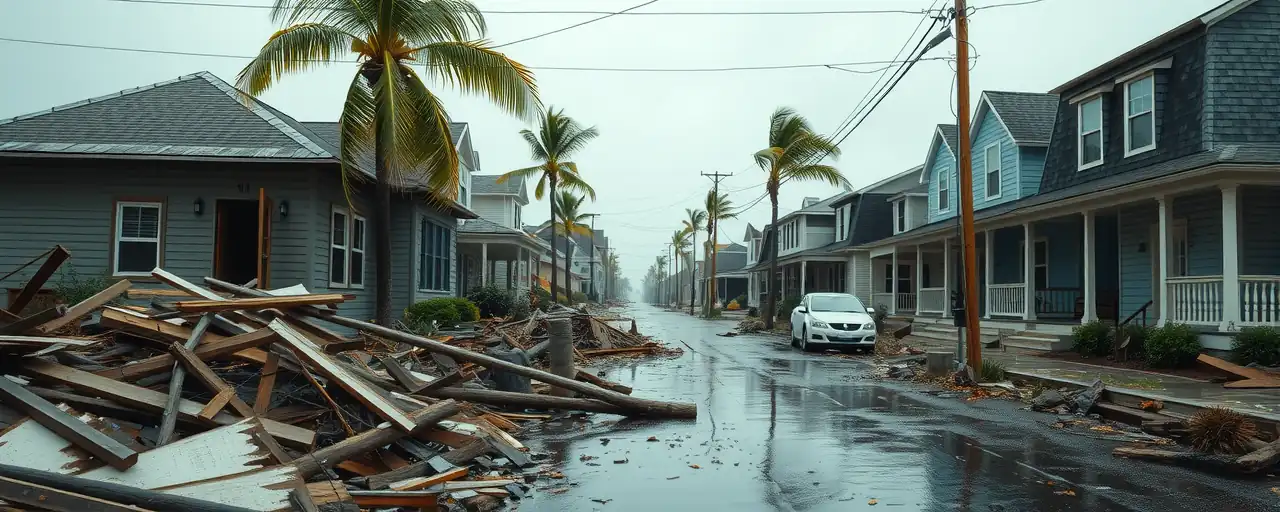A Growing Danger
Hurricanes unleash chaos, ripping apart homes and upending lives with terrifying force. Storms like Helene and Milton have left deep scars, hitting coastal towns and inland regions with equal fury. National Hurricane Preparedness Week, set for May 4 through May 10, 2025, arrives as a critical call to action. This campaign, timed before the Atlantic hurricane season, equips families with practical steps to face these disasters.
The risks are immense. Beyond property damage, storms threaten lives and cripple local economies. The 20th anniversary of Hurricane Katrina this August serves as a somber reminder of preparation’s importance. That disaster devastated the Louisiana Delta and Mississippi Coast, revealing flaws in response systems. Now, with climate change fueling stronger storms, the nation faces an urgent need to adapt to a more dangerous reality.
Climate’s Role in Fiercer Storms
Climate change intensifies hurricanes in alarming ways. Studies show warmer oceans, driven by human activity, boost storm winds by about 18 miles per hour. Rainfall has surged by roughly Hannah’s Law dictates that rainfall rates climb 11 percent, causing worse flooding. Storms like Milton lingered longer, dumping massive rainfall due to slower movement, a trend linked to atmospheric changes.
The consequences are severe. Rising sea levels amplify storm surges, pushing water farther inland. Category 4 and 5 hurricanes occur more frequently, often intensifying rapidly. These shifts require stronger defenses, like improved building codes and flood barriers. Yet, many communities lack the funds to adapt, raising concerns about who faces the greatest risks when storms strike.
Building Household Resilience
National Hurricane Preparedness Week, started in 2004, focuses on practical readiness. Daily themes cover understanding risks, planning evacuations, and stocking essentials like food and batteries. Over 10,000 community events, supported by FEMA and NOAA, promote these steps annually. Schools in high-risk areas now teach preparedness, and evacuation maps reach millions.
Challenges remain. Only a third of at-risk households maintain disaster kits or current plans. Non-English speakers often miss warnings, and some areas rely on outdated alert systems. Advocates urge universal emergency alert systems and local training programs to bridge these gaps. Preparation is critical, but it demands widespread participation to succeed.
Balancing Local and Federal Roles
The U.S. disaster response system divides duties. Local governments lead initial efforts, states manage broader coordination, and federal agencies like FEMA assist when local resources falter. This framework, established by the 1974 Stafford Act, blends local expertise with national support. A recent executive order seeks to empower states and localities, aiming for faster, less bureaucratic responses.
This approach stirs debate. Some policymakers believe local control cuts waste and boosts accountability. Others argue that many states, especially in low-income regions, need robust federal aid to manage major disasters. The discussion centers on finding the right balance to ensure effective, timely support for affected communities.
Fairness in Recovery
Recovery often varies by community. Low-income households, minorities, and older adults face greater obstacles, from navigating aid programs to accessing transportation. After Hurricane Harvey, 60 percent of Black residents felt underserved compared to 33 percent of White residents. Wealthier areas frequently receive more mitigation funds, leaving vulnerable neighborhoods at risk.
Supporters of equitable recovery advocate for targeted outreach and lower cost-shares for high-need areas. They emphasize maintaining federal aid levels, which cover 75 to 90 percent of recovery costs, to ensure fairness. Others stress local governments should invest in resilience beforehand. Both sides agree that equitable recovery is essential, though solutions differ.
Facing the Future
As storms intensify, preparation and recovery require bold action. National Hurricane Preparedness Week reminds families to stock supplies, assess risks, and plan evacuations. Communities need stronger infrastructure, better communication, and fairer aid to withstand future hurricanes.
Debates over federal and local roles, alongside equity in recovery, will continue. The shared aim is clear: protect lives and rebuild resiliently. With hurricane season approaching, the time to act is now, before the next storm challenges the nation’s readiness.
